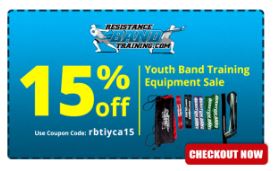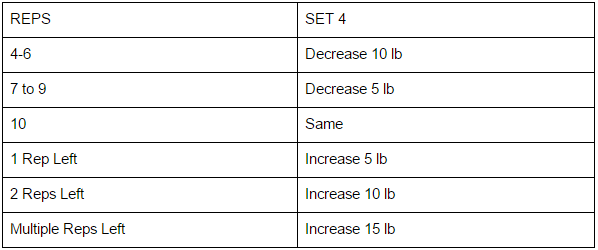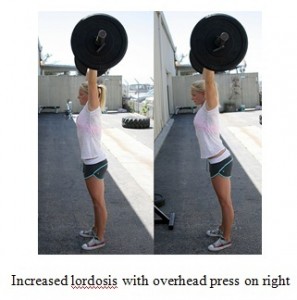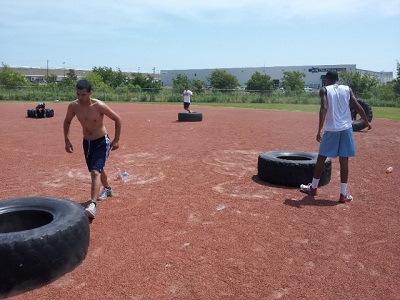Can Performance Training Issues Be Solved by Standardizing?
The goal of Performance Training programs for young athletes is simple: create more injury-resistant and higher-performing athletes.
After years of coaching parents and youth, it is evident that performance training is still not held as an essential or non-negotiable part of an athlete’s career.
How can performance training become a non-negotiable activity for athletes?
Let’s look at other activities that are common with youth, like karate, gymnastics, and boy/girl scouts. In all of these, you can find achievement progressions exemplified in the use of belts, levels or badges.
These progressions provide a clear guide for how a participant can achieve success. Performance Training programs could be standardized in a similar fashion. However, we need to first address some of the current issues.
Current Issues
Stopping When Functional
Many training programs utilize a program model that has the athlete completing achievement, and there is no longer any room for improvement. Typically, this occurs once the athlete appears to be moving and functioning fundamentally.
So…now what?
Pro Tip: Create a “ladder” of achievement for young athletes. This ladder will allow them to continue to move toward a Performance Training program. Once they have qualified for this program, there is a new set of criteria for advancement.
No Mastery of Skills
Over the last decade or so, the onset of “functional strength” has meant that young athletes are introduced to a wide variety of movements including unstable surfaces, single leg exercises and more.
These variations are meant to induce “sport specific” characteristics. While that is great, the athletes never become masters of any one skill because they only scratch the surface of multiple variations.
Pro Tip: Focus on the “big bang” movements: squat, dead lift, bench, power clean, overhead press and loaded carries. These movements provide the foundation of the program until mastery is achieved.
Athletes need to learn the basics before moving on to a more complex exercise. You would not have a basketball athlete practice a cross-over dribble when they cannot dribble a ball with one hand.
Lack of Next Level Necessities
 As athletes grow and develop, they may have aspirations of playing their sport(s) at a collegiate level. This may be seen as an opportunity to earn a scholarship.
As athletes grow and develop, they may have aspirations of playing their sport(s) at a collegiate level. This may be seen as an opportunity to earn a scholarship.
As a result of the focus on sport-specific training, oftentimes, an athlete never properly learns or completes the functional lifts.
Pro Tip: Focus on teaching the basics and doing “simple things savagely well” (as Mark Verstegan says), then athletes will be optimally prepared for the strength demands and the rigors of performing at the next level.
Focusing on Simply “Moving Weight”
There seems to be a trend in the youth strength and conditioning world of simply lifting a “specific weight”. This creates numerous concerns.
- The focus on this “number” may create a situation where a teammate or coach assists with a lift, and the athlete is actually not capable of lifting this weight.
- Larger athletes might not feel compelled to progress past a specific weight.
- Smaller athletes may feel less confident as they are not able to reach the weight.
Pro Tip: When determining measuring metrics, consider each individual’s strength relative to their body weight. For example, a 300lb squat for a 300lb lineman is a lot different than a 300lb squat for a 150lb athlete.
No Positivity
There is a lack of emphasis on positive reinforcement for proper movement or great performances in many programs. This can have a negative impact on the athlete’s confidence levels, create a negative learning environment and/or stall or decrease progress, to name a few.
Pro Tip (BONUS!): This may be the most important item to take away. You must praise and provide feedback to your athletes. This does not have to mean “everyone gets a medal,” but for example, you earn colored bands as you improve.
Higher-level bands are a sign of proficiency and progress, the athlete becoming more self-aware, confident, and stronger. We should provide reinforcement for these attributes!
SUMMARY
By creating a standardized system, you provide athletes, parents and coaches with a simplistic and organized path to athletic success in your program.
ADAPT and Conquer,
Coach Jared
About the Author: Jared Markiewicz
 Jared is founder of Functional Integrated Training (F.I.T.). F.I.T. is a performance-based training facility located in Madison, WI. They specialize in training athletes of all levels: everyday adults, competitive adults and youth ages 5-20+.
Jared is founder of Functional Integrated Training (F.I.T.). F.I.T. is a performance-based training facility located in Madison, WI. They specialize in training athletes of all levels: everyday adults, competitive adults and youth ages 5-20+.
The long-term vision for F.I.T. is recognition as the training facility for those desiring to compete at the collegiate level in the state of Wisconsin. Alongside that, to also develop a platform to educate those in our industry looking to make strides towards improving the future for our young athletes.
Find out more about Jared’s gym by visiting F.I.T.
Career Highlights
- 2014 Fitness Entrepreneur of the Year – Fitness Business Insiders
- 2014 IYCA Coach of the Year Finalist
- Volunteer Strength Coach for West Madison Boys Hockey and Westside Boys Lacrosse
- Helped develop dozens of scholarship athletes in 3 years of business
- Instructed Kinesiology Lab at UW-Madison
- Houses an internship program at F.I.T. that started in 2013
- Member of Elite Mastermind Group of Nationwide Fitness Business Owners
Want to Learn More about Standardization?
Check out Jared’s Module in INSIDERS with this Exclusive Trial.



 Seriously, they can go anywhere! Resistance bands don’t take up a ton of space, and they aren’t heavy or hard to transport. Stick them in your trunk and use them in every session! (They are 100% TSA approved so you can even fly with them.) 😉
Seriously, they can go anywhere! Resistance bands don’t take up a ton of space, and they aren’t heavy or hard to transport. Stick them in your trunk and use them in every session! (They are 100% TSA approved so you can even fly with them.) 😉
 Julie is the Executive Director of the International Youth Conditioning Association (IYCA). She grew up as an athlete and played collegiate softball at Juniata College. She currently owns and operates her own youth fitness business pouring into young athletes. Her areas of expertise are youth sport performance, youth fitness business and softball training/instruction. Julie grew up on a dairy farm and can challenge the best of the best in a cow-milking contest. 😉
Julie is the Executive Director of the International Youth Conditioning Association (IYCA). She grew up as an athlete and played collegiate softball at Juniata College. She currently owns and operates her own youth fitness business pouring into young athletes. Her areas of expertise are youth sport performance, youth fitness business and softball training/instruction. Julie grew up on a dairy farm and can challenge the best of the best in a cow-milking contest. 😉









 If you are like most performance coaches, passion got you started—persistence keeps you going—and pride keeps you from quitting when the going gets tough.
If you are like most performance coaches, passion got you started—persistence keeps you going—and pride keeps you from quitting when the going gets tough. 



































